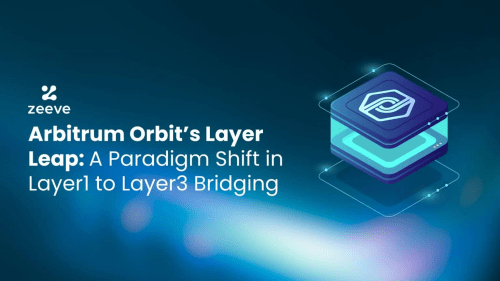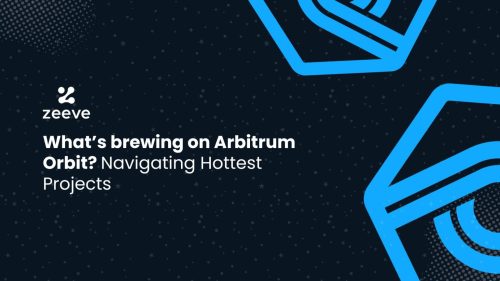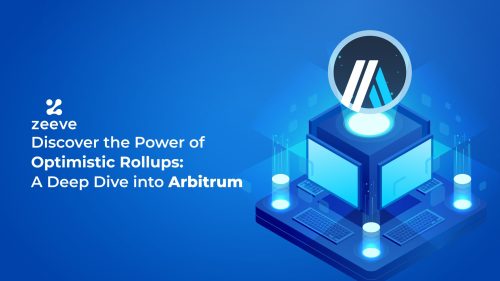Arbitrum Orbit’s Layer Leap: A Paradigm Shift in Layer1 to Layer3 Bridging

As a leading L2 scaling solution, Arbitrum strongly adheres to introducing innovative solutions to enhance user experience and drive popularity across web3 communities. Now that Orbit Layer3s are setting up the hottest trend, Arbitrum has recently introduced an exciting ‘Layer Leap’ service to simplify bridging-related operations on Layer3s.
Layer1 to Layer2 bridging is quite a mature method, and therefore, it is no longer a challenge for users. Speaking of Layer3s, they represent a new concept and hence Layer1 to Layer3 bridges can be a tough experience for a lot of dApp users. Layer Leap adds an abstraction layer over the complex approach of Layer1 to Layer3 bridging as it removes L2 from the picture and supports direct bridging of funds between Layer1 Ethereum and Layer3 Arbitrum Orbit chains. With L2 bypassing, Layer Leap service offers a more efficient, quick, and easy-to-use asset transferring system.

Through this article, we will decode Arbitrum’s Layer leap, allowing everyone to understand the challenges it addresses, benefits, and the protocols using this service. Let’s dive in!
The challenge of Layer1 to Layer3 chains bridging:
As you may know, Layer3 chains have emerged as a specialized layer built on top of Layer 2, focusing on application-specific needs of dApps. Enabling interoperability is among Layer3’s top features. And, that’s possible because Layer3s can be easily optimized to utilize a novel consensus and standardized inter-chain communication protocols (example- IBC) to unlock end-to-end interoperability while also catering to a massive throughput need of dApps.
Layer3 Orbit chains use L2 chains, such as Arbitrum one as their settlement layer. However, note that Layer2 Arbitrum chains will still settle on Layer1 Ethereum. This means L3s have an indirect dependency on layer 1 for the ‘deposit’ and ‘withdrawal’ of ERC-20 tokens. For this, Arbitrum already offers a full-fledged Arbitrum Bridge that allows for seamless asset sharing between the child and the parent chain. But, the pre-Leap layer approach requires funds to be transferred via Layer2. For example, if you want to withdraw (bridge) assets from Layer1, you will typically need to follow the below process:
Step:1 Initiating deposit on Layer1- At first, initiate a transaction to lock your funds/assets on Layer1. This also ensures a successful deposit of assets into Layer2’s bridge contract.
Step:2 Transfer your assets to Layer2: Next, Layer bridge contract will process the initiated transaction and issue you Layer2 tokens or representation of your assets on the Layer2 chain. For this process, your transaction needs confirmation as per Layer2’s specific consensus mechanism.
Step:3 Bridging assets to layer3: Once your assets/funds are transferred on Layer 2, you again need to use Layer3-specific bridge to transfer your assets from Layer2 to the Layer3 chain: This step may require you to:
- Interact with the bridge contract on Layer 2 that is accountable to handle transfer of assets from Layer2 to Layer3 Orbit chain.
- Involve a cross-chain proof that verifies and confirms the asset transfer from Layer 2 to Layer 3.
Finally, verify the successful asset bridging on your end. Do this by checking your wallet balances and confirming the transactions.
As we see, this approach of bridging assets between L1 and L3 via L2 can be a good option for users with blockchain expertise. However, users that lack familiarity with bridges and their complex working mechanism might face several challenges that will eventually hamper the user experience. On that note, let’s see how Arbitrum Orbit’s leap layer is providing a solution to abstract away all these challenges.
Arbitrum Orbit’s Layer leap’s cutting-edge solution for the above challenges:
Cross-chain bridges are a pivotal component in Orbit chain to allow withdrawal as well as deposit of assets. Leap layer service from Arbitrum Orbit adds next–level functionality into these bridges, replacing the above complex L1→L2→L3 approach with a straightforward L1—>L3 process. Thus, Orbit chains become extremely easy to interact for all levels of users and they can drive even higher adoption. Putting it more simply, Layer Leap has introduced a single-step L1 to L3 bridging operation for the Orbit ecosystem. The Layer leap feature has gone live on the mainnet and is available for Orbit L3s to adopt.
Upon adding support to Layer leap, L3s can allow their users to move funds/assets from Ethereum Layer1 to any Orbit L3 chain in just one leap without the need of touching Layer2, and all within a single click. Using their existing Orbit-compatible bridge, users can perform transactions between Ethereum L1 and their preferred L3 (as shown in the below image) and thereby move the funds seamlessly.
Source: Arbitrum
Which Orbit L3s are using the Layer Leap feature?
Arbitrum Orbit’s layer leap is a very new offering that Arbitrum announced on June 24. However, it’s making waves across the rollup space through the novel one-step method of L1 to L3 bridging. Proof of play and Rari chain are two prominent Orbit Layer3s that were early adopters of Layer Leap. By adding Layer Leap’s support, both these chains have tapped into the potential to unlock a whole new, simplified way of transferring funds across distinct Orbit chains. With that, Arbitrum’s official tweet highly expects to onboards great number of users for Layer Leap service in future. This becomes more clear with the below tweet from Arbitrum which also has comment from one of the Pirate Nation’s players talking about the convenience he is getting due to layer Leap.
Also, Arbitrum’s official tweet mentions that the protocol highly expects to onboards great number of L3 chains for Layer Leap service in future.
Launch next-gen Orbit L3s in a fully low-code way with Zeeve RaaS
Zeeve’s rollups-as-a-service (RaaS) stack is optimized for Arbitrum Orbit-specific L3s, enabling enterprises and web3 projects to launch modular L3 with 30+ rollup integrations supported by third-party services. Zeeve RaaS also offers a 1-click deployment sandbox that you can use to launch a fully-functioning DevNet while also requesting testnet/mainnet with their desired configurations from the same panel within minutes. All the heavy lifting of writing codes, managing servers, and infra scaling will be addressed on Zeeve’s end, saving you significant cost while offering faster time-to-market.
For more information on Zeeve RaaS or other blockchain-based services, feel free to connect with our experts or schedule a one-to-one call for a detailed discussion





Responses